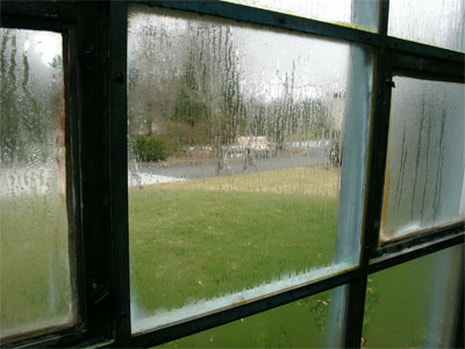|
24/2/2019 0 Comments wet windows? Read this.Why does condensation occur on interior surfaces? Condensation can occur on any surface that is below the "dew point" of the air with which it is in contact. The "dew point" is the temperature at which condensation will occur for a given humidity level. Inside Ontario homes in winter, the inside of the windows are the coolest surfaces. Condensation will typically appear there before it appears on other surfaces. Condensation is less likely to occur on interior walls, because they are typically warmer than "dew point."
Occasionally however, condensation may occur on cold spots such as nail heads, in corners of outside walls where insulation is reduced, or in confined spaces where circulation of warm room air is restricted. In extreme cases, condensation may lead to mildew and the growth of mould. To reduce or eliminate excessive condensation, the humidity level must be decreased or ventilation increased. To reduce humidity levels:
To increase ventilation:
If the obvious solutions don't eliminate the problem:
Attic ventilation is normally provided by vent openings in the soffit or gables, and the roof. The total area of ventilation should equal one square foot for every 200 to 300 square of ceiling area. Not less than 50% of the attic ventilation should be through the soffit or gables. In turn, not more than 50% should be through the roof. Moisture Produced by Household Activities: Family of 4
More about air exchangers:
0 Comments
Leave a Reply. |
AuthorGil Strachan is a professional home inspector, representing Electrospec Home Inspection Services in east-central Ontario since 1994. CategoriesAll Appliances Buying And Selling Cooling Electrical Environmental Exterior Health And Safety Heating Home Improvement Home Inspection Insulation Insurance Interior Plumbing Roofing Special Structure Archives
January 2024
|


